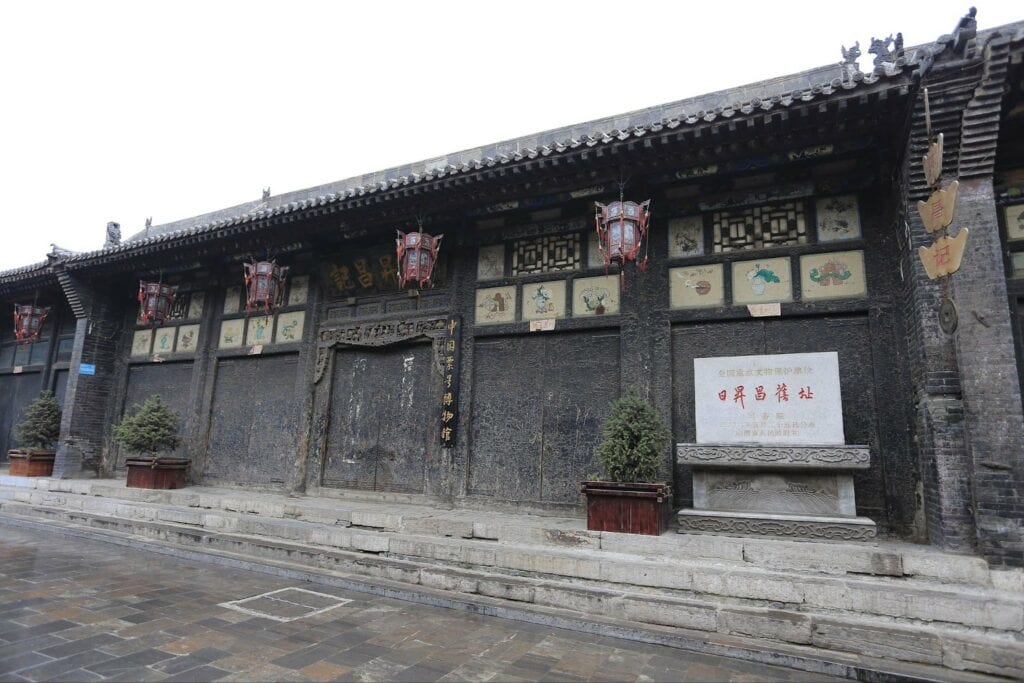The modern banking system in China has evolved a lot, especially over the past few decades. However, a few banks have weathered countless shifts in Chinese society and commerce to remain in operation for hundreds of years. These longest-standing banks offer a unique window into China’s financial history.
Let us look at the 8 oldest banks in China, some of which are still in existence today!
8. Postal Savings Bank of China (2007)
Year Established: 2007
Headquarters: Beijing, China
Still Operating: Yes

Postal Savings Bank of China is a commercial retail bank primarily serving small and medium enterprises and rural and low-income customers. It provides basic financial services to these segments. Xuewen Zhang and Hong Lao are the bank’s Vice Presidents and co-executive directors.
PSBC has over 39,798 branches covering all regions of China, making it one of the largest branch networks in the country. Initially capitalized with RMB 20 billion in 2007, PSBC has grown significantly, with RMB 1.5 trillion in deposits and the second-largest branch network in China after the Agricultural Bank of China.
In 2015, PSBC received investments from various strategic investors, including Temasek Holdings, UBS, and Tencent, among others. These investors collectively held a 16.92% stake in the company. In 2022, PSBC served approximately 600 million personal customers through its 40,000 outlets and services.
Did you know?
During the Global Financial Crisis, PSBC played a vital role in spreading the national economic stimulus plan to rural areas. It provided microfinance services as a tool for national development and poverty reduction.
7. Huaxia Bank(1992)
Year Established: 1992
Headquarters: Beijing, China
Still Operating: Yes

Huaxia Bank Co., Ltd. was established on October 14, 1992. It is a publicly traded commercial bank based in Beijing, China. Ms. Zhai Hongxiang serves as the Chairman of Huaxia Bank, while Mr. Wu Jian holds the position of Governor.
As of 2010, Germany’s Deutsche Bank held 19.99% of the bank’s shares. However, in December 2015, the People’s Insurance Company of China announced the acquisition of Deutsche Bank’s entire stake in Huaxia Bank.
By 2015, Huaxia Bank had gathered total assets amounting to $290.6 billion. As of 2012, Huaxia Bank had a network of 33 tier-1 branches, 23 tier-2 branches, 12 cross-city sub-branches, and 437 outlets across 68 major cities in China.
According to The Banker’s Top 1000 World Banks ranking, Huaxia Bank ranked 97th by assets in 2012. It also held positions in various Chinese enterprise rankings, including 306th among the Top 500 Chinese Enterprises and 96th among the Top 500 Chinese Service Enterprises in 2011.
Did you know?
Huaxia Bank has a settlement network containing more than 1,000 correspondent banks located in 320 cities across 110 countries.
6. China Everbright Bank(1992)
Year Established: August 1992
Headquarters: Beijing, China
Still Operating: Yes

China Everbright Bank Co., Ltd. was founded in August 1992 as one of twelve Chinese joint-stock commercial banks approved by the State Council and the People’s Bank of China. It operates as a partial state-owned enterprise, with a consortium of CHI (China Everbright Group) holding 55.58% of the shares and the general public owning the remaining 44.42%.
Tang Shuangning serves as the Chairman and Party Committee Secretary, while Zhang Jinliang holds the position of CEO and Party Committee Deputy Secretary.
The bank was ranked 139th in the 2016 Forbes Global 2000 list of publicly held companies. Its sister company, Everbright Securities, ranked 862nd. China Everbright Bank is a constituent of several prominent market indices, including the Hang Seng China 50 Index, FTSE China A50 Index, SSE 50 Index, and CSI 300 Index.
China Everbright Group and its subsidiaries own a significant stake of 27.97% in the bank, while Central Huijin Investment, the parent company of Everbright Group, holds a direct 21.96% stake.
Did you know?
The ultimate parent company of China Everbright Bank is the China Investment Corporation, supervised by the State Council of the People’s Republic of China.
5. China Merchants Bank (1987)
Year Established: 1987
Headquarters: Futian District, Shenzhen, Guangdong, China
Still Operating: Yes

China Merchants Bank was founded in 1987 by Yuan Geng. Commercial Merchants Bank is China’s first share-holding commercial bank completely owned by corporate legal bodies. It was listed on the Shanghai Stock Exchange in 2002 and the Hong Kong Stock Exchange in 2006, marking significant milestones in its growth.
In 2008, CMB became the first Chinese bank to establish a branch in the United States, situated in New York City. Later, the bank started international expansion, setting up branches in major financial hubs like New York, London, Hong Kong, Singapore, Luxembourg, and Taipei.
Initially starting with 44 branches and 623 sub-branches in China by December 2008, it expanded to about 140 branches and over 1,670 sub-branches by 2017. The bank diversified its services to include personal banking, corporate & investment banking, international settlements, trade financing, and M&A advisory.
CMB played a significant role in issuing credit cards in China, with around 80 million cards issued by 2017, making it one of the largest issuers in the country.
Did you know?
China Merchants Bank’s rapid growth resulted in it ranking 26th in the Forbes Global 2000 list by 2023.
4. Agricultural Bank of China (1951)
Year Established: 1951
Headquarters: Beijing, China
Still Operating: Yes

Agricultural Bank of China, also known as AgBank, is one of the “Big Four” banks in China. Founded in 1951, it has branches throughout mainland China and international locations such as Hong Kong, London, Tokyo, New York, and others.
With 320 million retail customers, 2.7 million corporate clients, and nearly 24,000 branches, ABC is China’s third-largest lender by assets, catering to a diverse range of customers.
ABC has undergone several formations and restructuring since the establishment of the People’s Republic of China in 1949. Its current iteration, founded in February 1979, has a focus on providing financial services to farmers.
ABC went public in mid-2010, conducting the world’s largest initial public offering (IPO) at the time. ABC’s 2010 IPO raised $22.1 billion after Shanghai and Hong Kong’s full over-allotments.
ABC has collaborated with various entities, including strategic investors, in its IPO, as well as forming joint ventures such as the asset management division launched in 2023.
Did you know?
In its history, the Agricultural Bank of China faced challenges such as a major bank theft in 2007 and adjustments during crises like the 2013 Korean crisis.
3. Shanghai Commercial Bank (1915)
Year Established: 1915
Headquarters: 12 Queen’s Road Central, Central, Hong Kong
Still Operating: Yes

Shanghai Commercial Bank (SCB) was founded in 1915 in Shanghai by K.P. Chen. It initially operated in China until its Hong Kong branch was incorporated as a separate entity in 1950.
The bank expanded its services during the late 1920s and early 1930s but faced challenges during the Japanese aggression and Chinese Civil War.
With the Communist government’s nationalization of the banking industry in mainland China, SCB’s assets there were acquired, leading to its re-incorporation in Hong Kong. In 1995, the bank’s link to Shanghai banking was symbolically revived through a 3% stake acquisition in the Bank of Shanghai.
Branches of SCB are spread across Hong Kong, mainland China, the United Kingdom, and the United States, serving individuals and corporations. SCB’s financial position has remained strong, with consistent profitability and strong capital adequacy ratios.
In 2017, the bank issued an international bond worth US$250 million to strengthen its capital base and support future business growth.
Did you know?
SCB was foundational in establishing JETCO(Joint Electronic Teller Services Limited), a prominent ATM network in Hong Kong that competes with other major banking networks.
2. Bank of Communications(1908)
Year Established: 1908 (re-established in 1986)
Headquarters: Shanghai, China
Still Operating: Yes

Founded in 1908, the Bank of Communications played a significant role in China’s modern banking history, issuing banknotes and providing financial services.
Following the Chinese Civil War, the bank was effectively divided, with part of it relocating to Taiwan with the Kuomintang government. In Taiwan, it merged with the International Commercial Bank of China to become the Mega International Commercial Bank.
The mainland operation continued as the Bank of Communications. It underwent restructuring in 1986 and resumed operations in April 1987, with its headquarters in Shanghai.
The bank’s ownership includes various entities of the State Council (34.55%), the National Social Security Fund (14.7%), HSBC (19.05%), and the general public (31.7%). It ranked 151st among the Fortune Global 500 in terms of operating income and 11th among the global top 1,000 banks in terms of Tier 1 capital, according to The Banker magazine.
In 2015, BOCOM sold $2.45 billion of Basel III compliant bonds to replenish its additional Tier 1 Capital, registered on the Hong Kong Stock Exchange.
Did you know?
Bank of Communications is among the top five commercial banks in China and has an extensive network of over 2,800 branches covering major cities. It has branches in Hong Kong, New York, Tokyo, and Singapore and representative offices in London and Frankfurt.
1. Rishengchang Piaohao(1823)
Year Established: 1823 (controversial dates: 1797 or 1824)
Headquarters: Pingyao, Shanxi Province, China
Still Operating: No. Ended banking operations in 1932

Rishengchang was founded in 1823 (controversial dates include 1797 or 1824). Rishengchang began as part of the Xiyuecheng Dye Company in Pingyao, central Shanxi, during the Qing Dynasty. This is one of the oldest banks in China as of now.
Originally a dye company, it transitioned into a remittance firm specializing in drafts, which became widely popular for its convenience in interprovincial transactions. Over thirty years, eleven piaohao (draft banks) were established in Shanxi province, expanding to thirty-two piaohao with 475 branches covering most of China by the late 19th century.
Central Shanxi region emerged as the financial center of Qing China due to the concentration of piaohao(draft banks), which were primarily owned by Shanxi merchants.
Successful leadership under figures like Lei Lutai, Cheng Qingpan, and Li Zhenshi contributed to the bank’s prosperity and stability. Under Li Wudian, new share classes like “fugu” and “konggu” were introduced for managers to reinvest dividends and gain voting rights, leading to the centralization of power.
Deterioration in performance during 1911-1912 led to financial losses, warrants for the arrest of shareholders, and eventual reorganization under new ownership. Permanently closed in 1932 during the global economic Great Depression, marking the end of Rishengchang’s operations.
Did you know?
Rishengchang operated as single proprietorships or partnerships, with owners having unlimited liability, focused on interprovincial remittances, government services, and advancing funds for provincial governments.
Conclusion
While most trace their roots back centuries, these 8 oldest banks in China helped lay the foundations of the modern Chinese banking system. Their staying power highlights the critical role banks play in facilitating economic development across generations.
Most of these banks still operate today, even after decades and even a century. The oldest bank in China, Rishengchang Piaohao, closed in 1932 after almost a century of operation. This bank is believed to be the first banking service in China.
So, here is to shaping history and economy!











